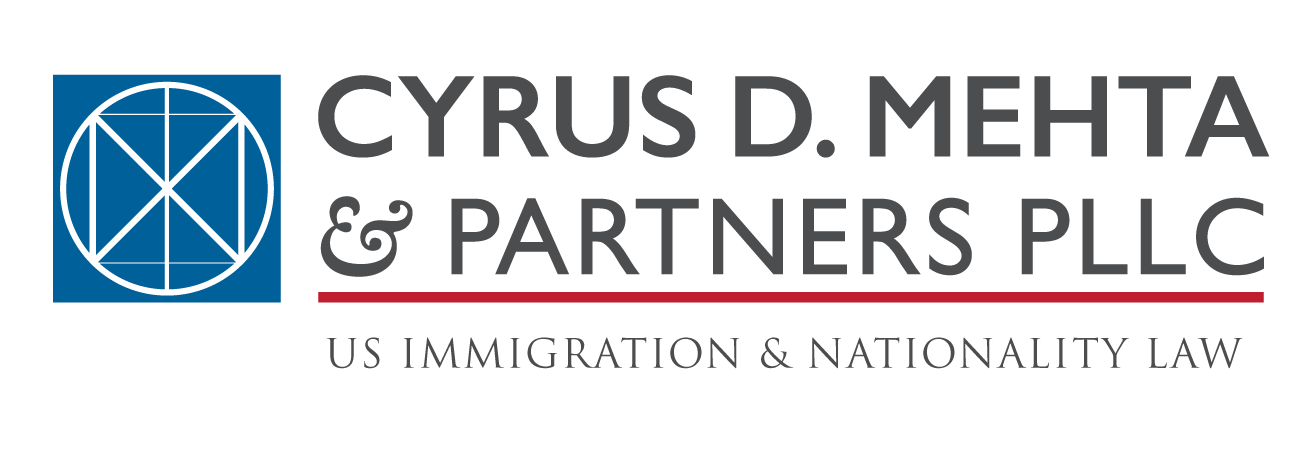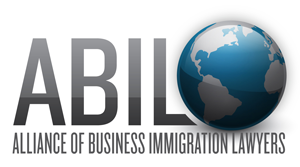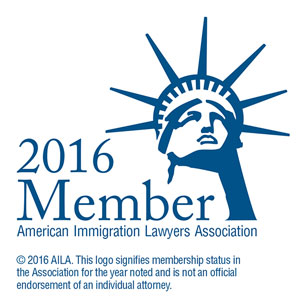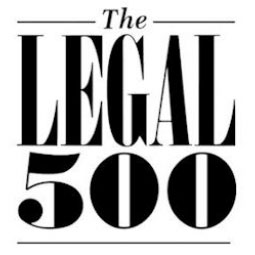Immigration Update – September 22, 2025
Headlines:
New $100,000 Fee on H-1B Entries by Presidential Proclamation, USCIS Clarifies – On September 19, 2025, President Trump issued a Presidential Proclamation requiring a $100,000 fee for certain H-1B petitions where the worker is outside the United States.
Trump Administration Unveils Gold & Platinum Immigration Plans – The Trump Administration has announced a plan for three new immigration pathways: the Gold Card, the Corporate Gold Card, and the forthcoming Platinum Card.
Court Reinstates Venezuela’s TPS Designation – The Ninth Circuit has upheld a district court decision restoring Venezuela’s Temporary Protected Status (TPS) designation.
State Department Puts a Price Tag on the Diversity Visa Lottery—One Dollar – Starting September 16, 2025, every hopeful Diversity Visa lottery entrant must pay the token charge at the time of registration.
USCIS Unveils New Naturalization Civics Test – USCIS is reintroducing a revised civics test that will apply to applicants filing on or after October 20, 2025.
USCIS Announces First-Half FY 2026 H-2B Visa Cap Reached – Employers subject to the cap and seeking to hire H-2B workers to start between October 1, 2025, and March 31, 2026, can no longer file new petitions.
Egypt Reaches Diversity Visa Cap for FY 2025 – The U.S. Department of State (DOS) announced that Egypt has reached its annual limit under the Diversity Visa (DV) Program for fiscal year 2025.
EB-5 Unreserved Visa Cap Reached for FY 2025 – The U.S. Department of State has announced that the unreserved category of EB-5 immigrant investor visas has reached its annual limit for fiscal year 2025.
State Department Expands Visa Interview Waiver Eligibility; DHS Restores Hungary’s ESTA Eligibility – DOS announced updates to its interview waiver policy for nonimmigrant visa applicants and DHS restored Hungary’s ESTA eligibility.
Korean Worker Detentions Revive Questions Over B-1 Visa Use – The detention and swift removal of hundreds of South Korean workers at a Georgia electric vehicle battery plant this month has reignited debate over the use of the short-term business visa.
A Field of Dreams for California Immigrants – In this New York Times article, read about the rolling acres of Sonoma County, where lies a baseball diamond.
AVITS Now Features Real-Time DS-160 Validation – There’s a new feature in the Department of State’s AVITS visa scheduling system: real-time DS-160 validation.
USCIS NTAs During the H-1B 60-Day Grace Period – An increase in Notices to Appear (NTAs) issued when an employer withdraws an H-1B petition, even when a change-of-employer (COE) or change-of-status (COS) petition has been timely filed within the grace period.
October 2025 Visa Bulletin Released with Notable Progress – Forward movement in key employment-based categories (especially for India), creates a valuable opportunity for many to file early and secure benefits.
Details:
New $100,000 Fee on H-1B Entries by Presidential Proclamation, USCIS Clarifies
On September 19, 2025, President Trump issued a Presidential Proclamation requiring a $100,000 fee for certain H-1B petitions where the worker is outside the United States. Effective September 21, 2025, U.S. entry will be restricted unless the petition is accompanied by this payment. The restriction is temporary (12 months, through September 20, 2026) but may be extended.
The Proclamation does not end the H-1B program. Employers may continue to file extensions, amendments, and transfers for H-1B employees already inside the United States. Pending or approved petitions for workers who remain in the U.S. will not be subject to the new fee. However, international travel is strongly discouraged, as returning employees could face the new payment requirement. The Department of Homeland Security may exempt individuals, companies, or industries if employing H-1B workers is in the “national interest,” though the standard for these exemptions is not yet defined. Cap-exempt entities (universities, nonprofits) are not specifically carved out but may qualify under this exemption.
On September 20, 2025, USCIS Director Joseph Edlow issued a memorandum attempting to clarify implementation of the Proclamation. According to USCIS, the $100,000 fee applies only prospectively, to petitions not yet filed. The Proclamation does not apply to beneficiaries of petitions filed before the effective date, beneficiaries of approved petitions, or individuals holding validly issued H-1B visas.
Despite this clarification, key questions remain unanswered. The memorandum does not specify whether the fee applies to petitions requesting a change or extension of status, or a change of employer. It also leaves open the possibility that USCIS may attempt to limit the fee to cap-subject petitions in the FY27 lottery, but no confirmation has been provided. Moreover, the USCIS guidance departs from the Proclamation’s language, creating inconsistencies that heighten uncertainty.
Trump Administration Unveils Gold & Platinum Immigration Plans
On September 19, 2025, the Trump Administration announced a plan for three new immigration pathways: the Trump Gold Card, the Trump Corporate Gold Card, and the forthcoming Trump Platinum Card. These programs represent a departure from the traditional job-creating EB-5 immigrant investor model, introducing donation-based routes to existing employment-based green card categories.
The Trump Gold Card would allow individuals to qualify under the EB-1A “extraordinary ability” or EB-2 “national interest waiver” categories by making a nonrefundable $1 million donation to the U.S. government. Gold Card holders would be treated like other permanent residents, subject to worldwide taxation and reporting obligations, and their status could be revoked under the same rules that apply to immigrant visas.
For employers, the Trump Corporate Gold Card requires a $2 million donation to sponsor an employee. Sponsorship could be transferred between employees, though it remains unclear whether a transfer would be possible after the originally sponsored employee secures a green card.
The administration also previewed a Trump Platinum Card, which would involve a $5 million donation and allow recipients to spend up to 270 days in the United States annually without U.S. taxation on foreign income.
Implementation of these programs is expected within 90 days, but applications cannot yet be filed until the Department of Homeland Security and the Department of Commerce issue detailed procedures.
Court Reinstates Venezuela’s 2023 TPS Designation
In a major ruling for hundreds of thousands of Venezuelans living in the U.S., the Ninth Circuit has upheld a district court decision restoring Venezuela’s 2023 Temporary Protected Status (TPS) designation. The court found that DHS Secretary Kristi Noem’s February 2025 attempt to vacate and terminate the country’s TPS status was “arbitrary and capricious” and exceeded her statutory authority under the Administrative Procedure Act.
The decision means that more than 300,000 Venezuelan nationals who rely on TPS protections—many of them spouses and parents of U.S. citizens—can remain shielded from deportation and maintain their work authorization until October 2, 2026. The court emphasized that DHS’s abrupt reversal ignored established procedures, failed to consult other agencies, and relied on pretextual reasoning rather than genuine country condition evidence.
USCIS has since confirmed that Venezuela’s 2023 TPS designation is reinstated, with protections and work authorization extended under the terms of that designation. Eligible Venezuelan nationals may continue to apply for or renew TPS, safeguarding their ability to live and work lawfully in the United States while conditions in Venezuela remain unsafe.
On Friday, September 19, 2025, the administration filed an emergency appeal with the U.S. Supreme Court. Separately, the 2021 TPS designation for Venezuela will terminate on November 7, 2025.
State Department Puts a Price Tag on the Diversity Visa Lottery—One Dollar
The State Department has instituted a new rule for the Diversity Visa (DV) lottery: a $1 registration fee. Starting September 16, 2025, every hopeful entrant must pay the token charge at the time of registration.
Why the change? Officials say it’s about fairness—shifting the cost burden from the small group of winners to everyone who throws their name in the hat. Winners who advance in the process will still face the standard $330 visa application fee, but now even the long-shot dreamers must chip in. Payments will be processed through a secure government portal during registration, and applicants are urged to remain alert to scams, as the official U.S. government website is the only legitimate payment channel.
It’s a small fee with a big message: even the lottery of American opportunity has a cover charge.
USCIS Unveils New Naturalization Civics Test
USCIS has announced the first changes in a planned multi-step overhaul of the naturalization process, reintroducing a revised civics test that will apply to applicants filing on or after October 20, 2025. Known as the 2025 Naturalization Civics Test, the update is a modified version of the 2020 test, which briefly replaced the long-standing 2008 version before being rolled back.
The new test expands the civics question bank from 100 to 128 possible questions. Applicants will be asked up to 20 questions and must answer at least 12 correctly to pass. Unlike in 2020, examiners will stop asking questions once an applicant has either passed or failed, streamlining the process.
USCIS has emphasized that the update is intended to provide a more comprehensive assessment of applicants’ knowledge of U.S. history and government, while also claiming that the process is uniform and fair. Updated study materials are now available on the USCIS website, and the agency will temporarily keep 2008 test resources online for those who filed before the transition.
This marks the first step in what the agency has described as a broader effort to “strengthen assimilation, promote a unified American identity, and safeguard the responsibilities of citizenship.” Future changes to the naturalization process are expected to follow.
USCIS Announces First-Half FY 2026 H-2B Visa Cap Reached
U.S. Citizenship and Immigration Services (USCIS) has announced that the quota for H-2B non-agricultural worker visas for the first half of fiscal year 2026 has been reached on September 12, 2025. Employers seeking to hire H-2B workers for start dates between October 1, 2025, and March 31, 2026, who are subject to the cap can no longer file new petitions under that cap period.
However, certain petitions remain eligible: H-2B workers who are exempt from the cap, those changing employers, extending status, and other non-cap-subject petitions will still be considered.
Employers planning to use the H-2B program should monitor USCIS updates closely for when the second-half cap opens for April 1, 2026 employment start date.
Egypt Reaches Diversity Visa Cap for FY 2025
The U.S. Department of State (DOS) announced that Egypt has reached its annual limit under the Diversity Visa (DV) Program for fiscal year 2025. As of September 15, no further DV-2025 visas will be issued to Egyptian nationals.
By law, no single country can receive more than seven percent of the 52,056 diversity visas available each fiscal year. Egypt hit that threshold on September 15th, making it the first country to reach the cap for the 2025 program year.
DOS emphasized that selection in the lottery does not guarantee a visa. Each year, more individuals are selected than the number of visas available, to account for applicants who may not qualify or who decline to pursue the process.
EB-5 Unreserved Visa Cap Reached for FY 2025: New Applications on Hold Until October
The U.S. Department of State has announced that the unreserved category of EB-5 immigrant investor visas has reached its annual limit for fiscal year 2025, effective as of mid-September. As a result, no new EB-5 unreserved visas will be issued by U.S. consulates or approved for adjustment of status until the new fiscal year begins on October 1.
This USCIS/DOS action affects the portion of the EB-5 program allocated under the unreserved visa categories (known by their codes C5, T5, I5, R5, RU, NU), which make up about 68% of EB-5 visas. It also includes unused reserved visas carried over from prior years, in accordance with the EB-5 Reform and Integrity Act of 2022.
For EB-5 applicants, this means that unless they are applying under one of the reserved subcategories (i.e. targeting rural areas, high-unemployment areas, or infrastructure projects), they must wait until October to proceed. The backlog remains heavy for nationals of countries with high demand; for example, the “Final Action Date” for China remains in December 2015, while India has advanced but is still subject to a long wait.
While the annual cap reflects steady demand for the investor-immigrant pathway, the pause underscores how quickly visa numbers are being exhausted. The reset on October 1 offers a fresh start, but applicants planning for EB-5 under unreserved categories are advised to act early and to explore set-aside categories that remain current to avoid delay.
State Department Expands Visa Interview Waiver Eligibility; DHS Restores Hungary’s ESTA Eligibility
On September 18, 2025, the U.S. Department of State (DOS) announced an update to its interview waiver policy for nonimmigrant visa applicants, effective October 1, 2025. The policy expands consular officers’ authority to waive in-person interviews for certain low-risk applicants, such as renewals and specific visa categories, when local conditions permit. The DOS stated that all waivers will continue to be decided on a case-by-case basis, with national security and program integrity remaining priorities.
In a related development, the Department of Homeland Security (DHS) confirmed that Hungary’s eligibility for the Electronic System for Travel Authorization (ESTA) has been restored. Hungarian nationals are once again able to apply for travel to the United States under the Visa Waiver Program, which allows short-term visits without first obtaining a visa. AILA noted that the reinstatement follows diplomatic discussions and reflects Hungary’s compliance with U.S. security requirements.
Both agencies emphasized that travelers should review official updates and consult the relevant websites before making plans, as policies remain subject to change.
Korean Worker Detentions Revive Questions Over B-1 Visa Use
The detention and swift removal of hundreds of South Korean workers at a Georgia electric vehicle battery plant this month has reignited debate over the use of short-term business visas for activities that edge into unauthorized employment. The workers, many of whom had entered the United States on business visitor visas or under the visa waiver program, were assisting with equipment installation and project setup when U.S. immigration authorities intervened. Within days, most were returned to South Korea, prompting diplomatic concern and raising alarms about the chilling effect such enforcement actions could have on future investment in U.S. manufacturing projects.
The controversy highlights a longstanding tension in immigration law: the B-1 visa is intended for limited activities like meetings, supervision, or training, but the line between permissible “business” and prohibited “work” has often been contested. Companies argue that short-term technical roles are essential to launching major projects, while regulators view such practices as a circumvention of employment-authorized visas.
This is not a new issue. In 2013, the Indian IT firm Infosys faced one of the largest immigration settlements in history—$34 million—over allegations it used B-1 visas to bring foreign employees to the United States for work assignments that should have required H-1B visas. Although criminal charges were ultimately dropped, the case underscored how reliance on business visas for project-critical labor has long been scrutinized by U.S. authorities.
Without clearer rules or new options for short-term technical work, coupled with an enforcement-first administration in the White House, companies may reconsider testing the limits of business visas, or may avoid bringing manufacturing projects to the United States altogether.
A Field of Dreams for California Immigrants
In this New York Times article, read about the rolling acres of Sonoma County, where pinot noir and chardonnay vines stretch toward the horizon, there lies a baseball diamond—carved not by the major leagues, but by the calloused hands of vineyard workers. For more than two decades, it has been a sanctuary where laborers, line cooks, electricians, and the like have traded their gloves of toil for leather mitts, finding in the crack of a wooden bat a reprieve from life’s heavier burdens.
But this year, the Vinedos (or the Vineyards), members of the amateur Bay Area Latin League, struggled to field a complete roster. Fear has crept in alongside the vines. With the return of ICE raids under a new administration, many players stay home, wary of a knock on the door or a shadow in the parking lot.
Still, the field remains. Manuel Vallejo, the vineyard manager who first dreamed it into existence, tends both grapes and game, knowing the two are bound by the sweat of immigrant labor. Young men like Ervin, a Nicaraguan asylum seeker, come to the field to forget their peril, if only for a few innings. “When I’m on the baseball field, I forget about everything,” he says.
In the waning summer light after another game, with ranchera songs drifting and an American flag fluttering near home plate, the game endures, fragile and fleeting, but no less sacred. For in this vineyard field of dreams, baseball is not just a sport. It is therapy. It is resistance. It is hope.
AVITS Now Features Real-Time DS-160 Validation
AILA recently issued a practice alert highlighting a new feature in the Department of State’s AVITS visa scheduling system: real-time DS-160 validation. Rolled out in collaboration with DOS, the tool instantly cross-checks applicants’ DS-160 number, passport, and date of birth against the Consular Electronic Application Center (CEAC).
If the information matches and the DS-160 hasn’t already been used, applicants can move forward seamlessly with fee payment and scheduling. If not, they’ll be prompted to verify their details in CEAC before trying again. This change aligns with the DOS’s earlier requirements that DS-160s be submitted at least two business days before an interview, and mirrors similar systems like Yatri and Traveldocs. In essence, this new tool means fewer surprises later in the process.
While the feature aims to streamline scheduling and reduce errors, practitioners should be prepared for some hiccups as the system continues to roll out. Applicants may encounter interruptions if the validation fails, making it important to double-check information before submission.
As AVITS continues to evolve, real-time DS-160 validation is a step towards greater efficiency in consular processing. While the adjustment period may bring some initial bumps, the long-term goal is a smoother, more reliable visa scheduling experience for applicants and practitioners alike.
USCIS NTAs During the H-1B 60-Day Grace Period
AILA reports an increase in Notices to Appear (NTAs) issued when an employer withdraws an H-1B petition, even when a change-of-employer (COE) or change-of-status (COS) petition has been timely filed within the grace period. The 60-day grace period was intended as a safeguard under 8 CFR § 214.1(l)(2), in which H-1B professionals who lose their jobs can remain in the United States for up to 60 days to find new employment or change status without being considered out of status. Yet recent practice shows that this protection is fraying. The withdrawal step, required to end an employer’s wage obligations, now sometimes ironically triggers the very removal notice it was meant to prevent.
USCIS points to a February 2025 policy memo expanding its authority to issue NTAs when petitions are denied or revoked. But the memo also emphasized discretion. The legal mismatch is striking. H-1B portability under AC21 allows a worker to start for a new employer once a non-frivolous petition is filed. Immigration judges often dismiss these NTAs because the workers remain legally present and authorized for employment. But by then, the damage is done: careers disrupted, travel plans frozen, and families put through needless fear.
By treating workers with pending, bona fide filings as potentially out of status, USCIS is reshaping a long-standing protection for high-skilled workers. At minimum, this overreach not only chills hiring, but also signals to global talent that the United States is a risky place to stake a career. Until the agency realigns with its own rules, the 60-day grace period remains less a cushion than a trap waiting to ensnare.
October 2025 Visa Bulletin Released with Notable Progress
The October 2025 Visa Bulletin has been released, marking the start of a new fiscal year and a reset of annual visa limits. USCIS has announced that applicants should use Chart B (Dates for Filing) this month for both employment-based and family-sponsored categories. This means many individuals may be eligible to file adjustment of status applications sooner, unlocking benefits like work and travel authorization while they wait for their green card.
Highlights include forward movement across most employment-based categories, with particularly meaningful relief for Indian nationals in EB-2, EB-3, and EB-5. EB-1 remains current for most countries, creating opportunities for faster filings, while EB-5 set-aside categories remain fully current worldwide. However, EB-5 Unreserved for China has retrogressed by three months. Family-sponsored categories also see modest but steady progress.
Employers should take advantage of this early-year momentum to reassess immigration strategies, move quickly on pending cases, and identify employees who may now be eligible to file. Employees should confirm their eligibility and prepare documentation to file promptly. Acting now can reduce uncertainty and secure valuable interim benefits while waiting for green card approval.
Firm in the News
About Friday’s Presidential Proclamation on H-1B entry restrictions and fee, Cyrus Mehta was quoted in this Forbes article, this Times of India article on the relief to H-1B workers, and this separate Times of India article about the prohibitive fee.
Cyrus Mehta was quoted in this Times of India article: BIA Ruling Ends Bond for Illegal Entrants in US – But Overstays and Laid Off H-1Bs Still Eligible, as well as this Law360 article.





Leave a Reply
Want to join the discussion?Feel free to contribute!